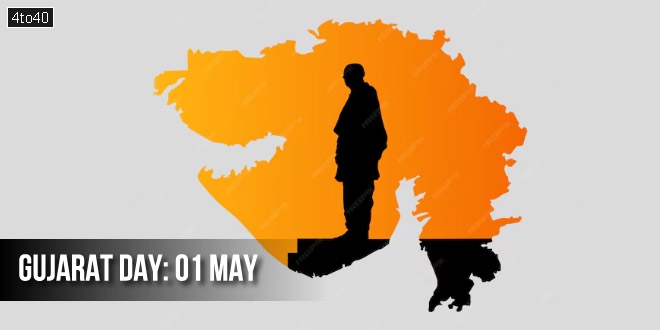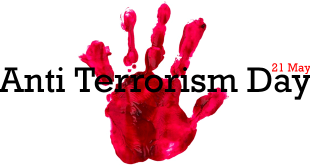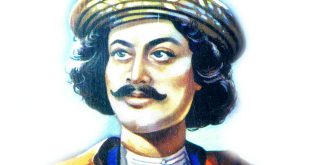Gujarat Day: It is observed on May 1. It is the foundation day for the state of Gujarat. It was formed on May 1, 1960. Take a look at the history of Gujarat State, some facts, wishes, messages, quotes, and more.
May 1 is celebrated as International Labour Day or May Day and is also an important date in Gujarat and Maharashtra. Both states came into existence on this day in 1960 through the Bombay Reorganisation Act. It represents the legacy and cultural identity of the Gujaratis. Several events are organised on this day to mark the celebrations.
Fact File:
| Area: | 1,96,024 sq km |
| Capital: | Gandhinagar |
| Formation (by bifurcation): | Gujarat Day – 1 May 1960 |
| Literacy (2011): | 78.03% |
| Sex Ratio (2011): | 919 / 1000 |
| Official Language: | Gujarati, Hindi |
| State Song: | Jai Jai Garavi Gujarat (“Victory to Proud Gujarat”) |
| Bird: | Greater Flamingo |
| Flower: | Marigold |
| Fruit: | Mango |
Gujarat at a Glance:
Gujarat – The Land of the Legends, stands bordered by Pakistan and Rajasthan in the north east, Madhya Pradesh in the east, and Maharashtra and the Union territories of Diu, Daman, Dadra and Nagar Haveli in the south. The Arabian Sea borders the state both to the west and the south west.
The State took it’s name from the Gujjars, who ruled the area during the 700’s and 800’s. Stone Age settlements around Sabarmati and Mahi rivers indicate the same time as that of the Indus Valley Civilization while Harappan centres are also found at Lothal, Rampur, Amri and other places.
Rock Inscriptions in the Girnar Hills show that the Maurya Emperor Ashoka, extended his domain into Gujarat in about 250 BC. With it’s fall, the control of the region came under the Sakas or Scythians.
During the 900’s the Solanki Dynasty came to power and Gujarat reached it’s greatest extent.
Then followed a long period of Muslim rule. Ahmed I, the first independent Muslim ruler of Gujarat, found Ahmedabad in 1411. The Mughal Emperor Akbar conquered Malwa and Gujarat in 1570s.
In 1600’s, the Dutch, French, English and Portuguese had all established bases along the coast of the region.
The British East India Company set its first footsteps in Surat in 1818 and the State came in control of their rule.
Gujarat was divided into princely states. After the Indian Independence in 1947, all of Gujarat except Saurashtra and Kutch became part of Bombay State until May 1, 1960, when the Government split Bombay state into the States of Maharashtra and Gujarat.
Ahmedabad became the chief city of the new State and housed the State Government Offices. They remained there until they were transferred to Gandhinagar in 1970.
Gujarat State History:
Gujarat – The Land of the Legends:
Gujarat is a State in northwestern India, on the border with Pakistan and Rajasthan in the north east, Madhya Pradesh in the east, and Maharashtra and the Union territories of Diu, Daman, Dadra and Nagar Haveli in the south. The Arabian Sea borders the state both to the west and the south west.
Gujarat: The State took its name from the Gujara, the land of the Gujjars, who ruled the area during the 700’s and 800’s.
Ancient Roots:
The first settlers in the State of Gujarat were Gujjars who happened to be an ethnic group of India, Pakistan and Afghanistan. Although their origin is remain uncertain, the clan appeared in northern India and in Saurashtra about the time of the Huna invasion. The name of the tribe was ‘sanskritized’ to ‘Gurjara’ who followed the main religions of Hinduism, Islam, Sikhism and Christianity.
However, the earliest Archeological traces indicate the Indus Valley Civilization as historical relics with the stone age settlements are found in Gujarat around Sabarmati and Mahi rivers. Its roots are also in the Harappan traces found at Lothal, Rampur, Amri and other places.
Ancient Gujarat was ruled by the Maurya Dynasty. Emperor Chandragupta Maurya conquered a number of states in Gujarat while his grandson, King Ashoka extended his domain in Gujarat. The reigns of the first three Mauryas were significant but with Ashoka’s death in 232 BC the Mauryan empire began to crumble,leading to political defragmentation. The Shungas who succeeded the Mauryas tried, unsuccessfully, to uphold the semblance of political unity.
After the fall of the Maurya Empire, the Sakas or Scythians controlled the region from AD 130 to 390. Under Rudra-daman, their empire contained Malwa (in Madhya Pradesh), Saurashtra, Kutch (Kachchh) and Rajasthan. During the 300s and 400s, the area formed a part of the Gupta Empire which in turn was succeeded by the Maitraka Dynasty. It was during the rule of Dhruvasena Maitraka that the great Chinese traveler and philosopher Hiuen Tsang visited India in 640 AD.
Between the decline of the Mauryan power and the coming of Saurashtra under the sway of the Samprati Mauryas of Ujjain, there was a Greek incursion into Gujarat led by Demetrius.
Three royal races of Hindus successively ruled over, namely, the Chawura, Solanki’, and Baghilah races. The total number of individuals belonging to the tribes who held power amounted to twenty-three, and they retained possession of the country for five hundred and seventy-five years – previous to the period when Gujarat became subject to the Mohammedans. The Chawura tribe ruled one hundred and ninety-six years after which the power passed into the hands of the Solankhi tribe in the manner described.
It was during the 900s that the Solanki Dynasty came to power. Under the Solanki Dynasty, Gujarat reached to its greatest extent. It is believed that the Gujjars belonged to this Solanki Dynasty because Pratiharas, the Paramaras and the Solankis were imperial Gujjars. Ancient Gujarat’s last Hindu rulers were the Solanki clan of Rajputs from 960 AD to 1243 AD. It is also learnt, Karandev of the Vaghela dynasty was the last Hindu ruler of Gujarat and he was overthrown by the superior forces of Alauddin Khilji from Delhi in 1297.
Medieval Invasions:
The Muslim rule continued for 400 years. Gujarat’s Muslim governor Zafar Khan Muzaffar asserted his independence, and established the first Muslim sultanate in Gujarat. He took advantage of the weak rulers of Delhi prevailing at the time. He declared independence and assumed the title of Muzaffar Shah. His successor, Ahmed I, the first independent Muslim ruler of Gujarat, found Ahmedabad in 1411 on the banks of the Sabarmati river.
Prior to this, Mahmud of Ghazni invaded Gujarat, AD 1026. He had vowed to invade India in order to destroy idolatry, capture prisoners of war and plunder the vast wealth for which Gujarat was known. Later, Allaudin Khilji invaded Gujarat in 1298 AD.
Sultanate of Gujarat remained independent until 1576 when the Mughal emperor Akbar conquered it and annexed it to the Mughal Empire. The Mughal Emperor Akbar conquered Malwa and Gujarat in 1570s. The Mughals ruled for about 2 centuries till the streak was terminated by the Marathas after that Chhatrapati Shivaji, the great Maratha ruler conquered Gujarat with his military skill.
Influencing Modernity:
In 1600’s, the Dutch, French, English and Portuguese – all established bases along the coast of the region acquiring several enclaves along the Gujarati coast, including Daman and Diu as well as Dadra and Nagar Haveli.
The British East India Company established a factory in Surat in 1614, which formed their first base in India, but it was eclipsed by Bombay after the British acquired it from Portugal in 1668. The Company wrested control of much of Gujarat from the Marathas during the Second Anglo-Maratha War. Many local rulers, notably the Maratha Gaekwads of Baroda (Vadodara), made a separate peace treaty with the British, and acknowledged British sovereignty in return for retaining local self-rule.
Gujarat was placed under the political authority of the Bombay Presidency, with the exception of Baroda state, which had a direct relationship with the Governor-General of India. From 1818 to 1947, most of present-day Gujarat, including Kathiawar, Kutch, and northern and eastern Gujarat were divided into dozens of princely states, but several districts in central and southern Gujarat, namely Ahmedabad, Broach (Bharuch), Kaira, Panch Mahals, and Surat, were ruled directly by British officials.
A new era began with the Independence movement started by leaders like Mohandas Karamchand Gandhi, Sardar Vallabhbhai Patel, Morarji Desai, K.M. Munshi, Narhari Parikh, Mahadev Desai, Mohanlal Pandya, Bhulabhai Desai and Ravi Shankar Vyas all who hailed from Gujarat. Gujarat became a place for some of the most popular revolts, including the Satyagrahas in Kheda, Bardoli, Borsad and the Salt Satyagraha.
Mahagujarat Movement:
After the Independence, in 1948, a Mahagujarat conference took place to integrate the entire Gujarati speaking population under one administrative body and on May 1, 1960, the Bombay State split into the states of Maharashtra and Gujarat. The term ‘Mahagujarat’ encompassed the whole Gujarati speaking area including Gujarat, Saurashtra and Kutch. For the first time after the Sultanate, Gujarat was once again autonomous.
Post Independence and Politics:
After gaining independence in 1947, the Indian National Congress party (INC) ruled the Bombay state (which included present day Gujarat and Maharashtra). Congress continued to govern Gujarat after the state’s creation in 1960. During and after India’s State of Emergency of 1975-1977, public support for the Congress Party eroded, but Congress continued to hold government until 1995.
State has had 14 different Chief Ministers since its formation in 1960 till 2023. Dr. Jivraj Narayan Mehta 1 May 1960 – 19 September 1963 of Indian National Congress was the first Chief Minister. In the 1995 Assembly Polls, the Congress lost to the BJP and Keshubhai Patel came to power.
In 2001, following the loss of 2 assembly seats in by-elections, Shri Keshubhai Patel resigned and yielded power to Shri Narendra Modi. The BJP retained a majority in the 2002 election and Shri Narendra Modi has served as Chief Minister of the state since 7 October 2001 to 21st May 2014.
Quotes, Wishes and Messages:
- I hope and pray to see the state achieve greater success.
- I hope and pray to see the state attain greater success.
- Warm Greetings and Best Wishes to the People of Gujarat.
- Let’s celebrate this Day by uniting people with joy, love and happiness.
- Salutes to Mother Gujarat on the occasion of Gujarat Day. Jay Jay Garvi Gujarat.
- On this occasion of Gujarat Day, I pray that we take our glorious state of Gujarat to greater heights this year.
- Best wishes to the people of Gujarat. May the state scale newer heights of growth in the years to come.
- The jewel of the West, Gujarat is the pride of India. May this year bring more glory and success to the state.
- Gujarat is the pride of India. May this year bring more glory and achievement to our cherished state.
- May Gujarat Thrives, prosper and Climbs the Ladder of Progress.
 Kids Portal For Parents India Kids Network
Kids Portal For Parents India Kids Network







